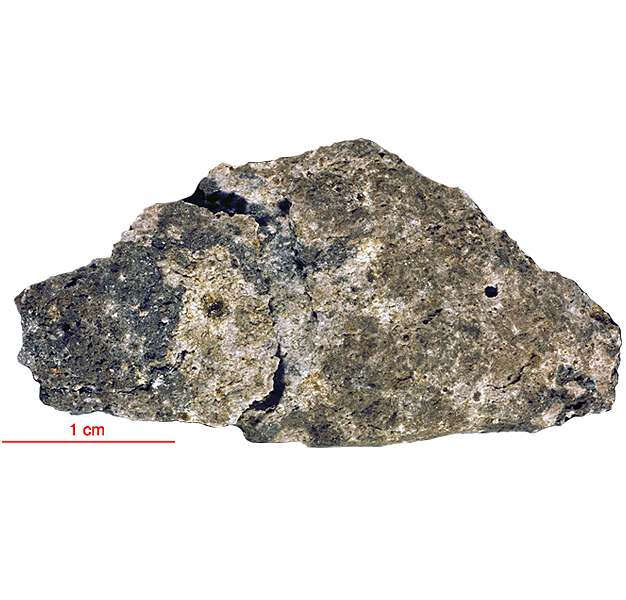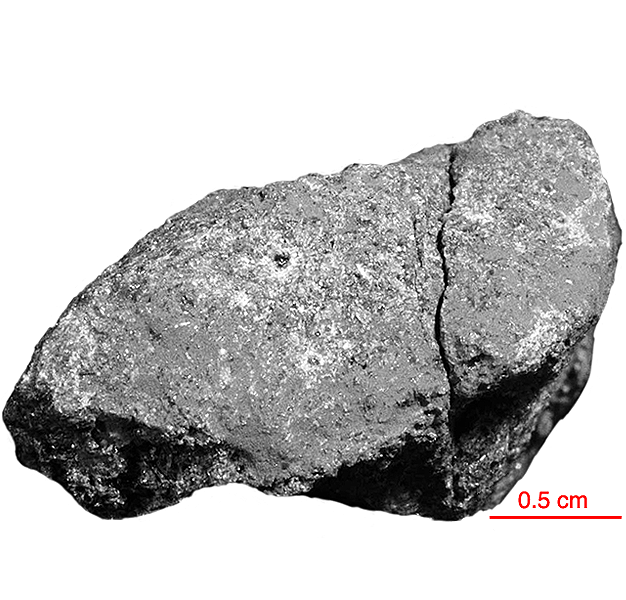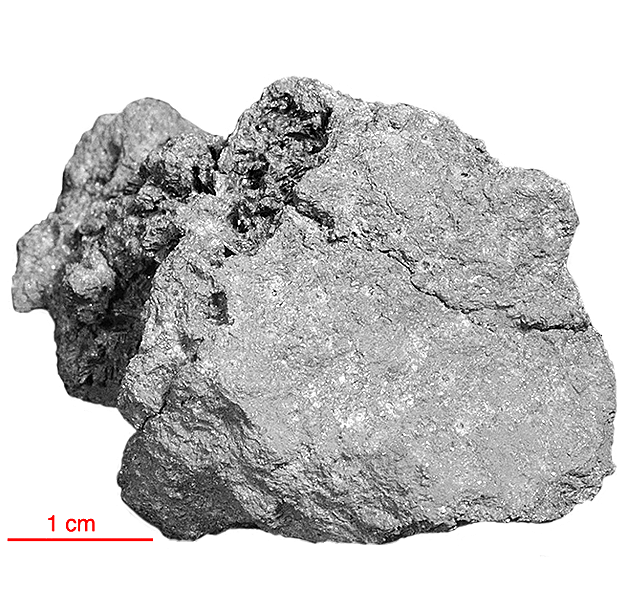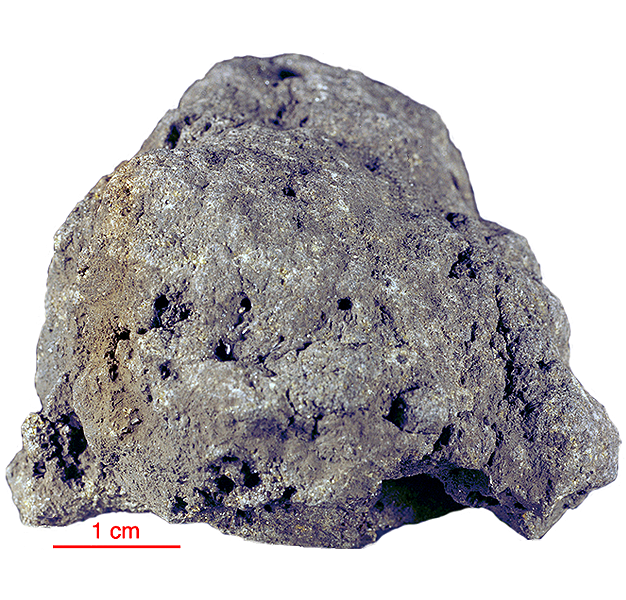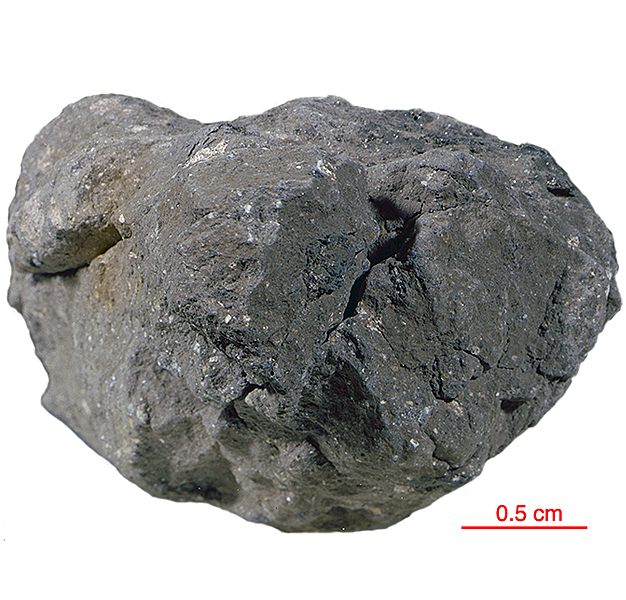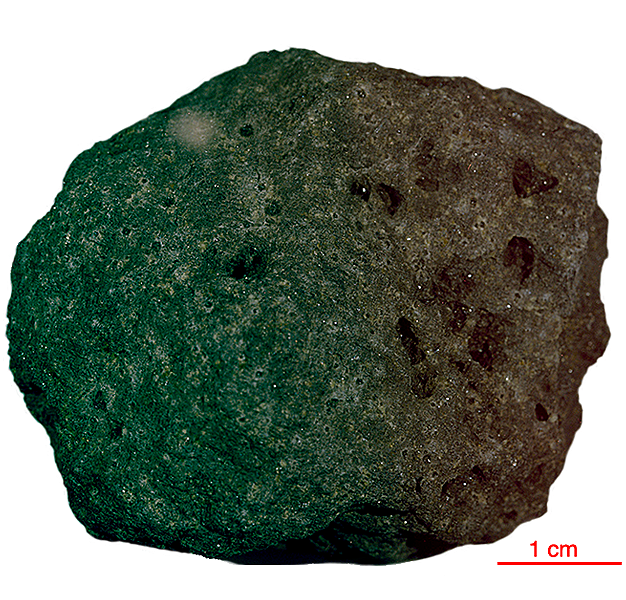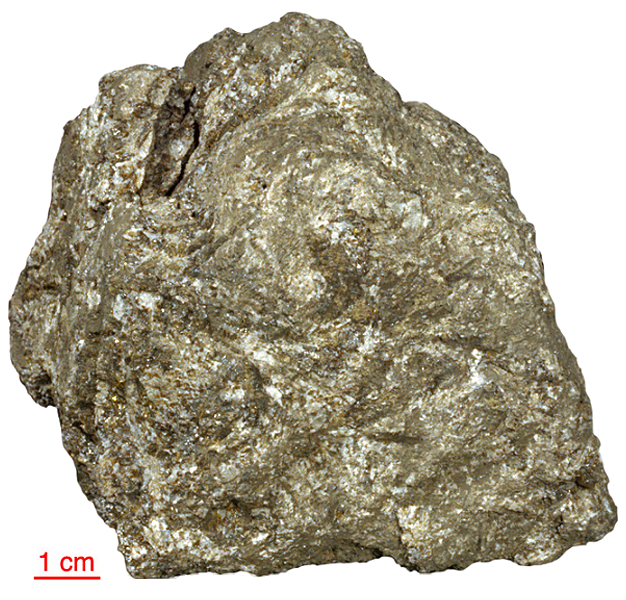
Fact sheet
This interesting rock is not well studied, nor characterized. 12031 is a coarse-grained (~2 mm), equigranular rock with a variable texture. Graphic intergrowths of pyroxene and plagioclase give way to a more granular, gabbroic texture. Elongated and externally skeletal ilmenite, tridymite laths and interstitial cristobalite constitute the rest of the rock. Magnesian olivine and Cr-spinel are absent and pyroxenes are neither lath-shaped nor porphyritic. Plagioclase occurs as large, anhedral, poikilitic grains with prominent and complicated twinning. Groundmass phases are remarkably coarse-grained. Troilite is associated with phosphate at the junction of pyroxene and pyroxferroite. At the junction, pyroxferroite breaks down to fayalite, cristobalite and Fe-rich pyroxene in wormy intergrowths.
The sample weighed 185 grams before analysis and is 3.23±0.07 billion years old (Rb-Sr).
Deterioration of the embedding resin has resulted in the growth of colourful crystallites around the thin section.
Further details of this and other Apollo samples are here: http://curator.jsc.nasa.gov/lunar/
Apollo 12 returned 34 kilograms of samples, including 45 rocks, samples of lunar 'soil', and several core tubes that included material from as much as 40 centimetres below the lunar surface.
Apollo 12 rocks were almost all basalts, with only two breccias in the returned samples. The basalts at the Apollo 12 site formed 3.1 to 3.3 billion years ago, roughly 500 million years later than the Apollo 11 basalts. Overall, there is much less of the element titanium in the Apollo 12 samples than in the Apollo 11 samples, which explains the more reddish colour of this region. The differences in age and chemical composition between the Apollo 11 and Apollo 12 samples demonstrate that mare volcanism did not occur as a single, Moon-wide melting event.
Apollo 12 was launched on 14 November 1969.

